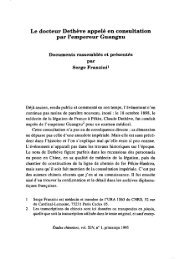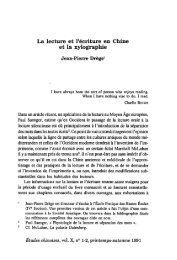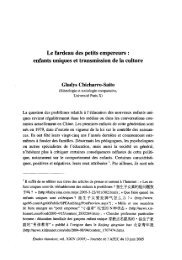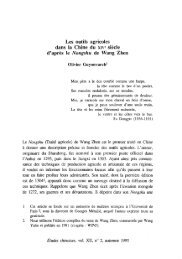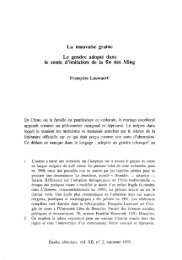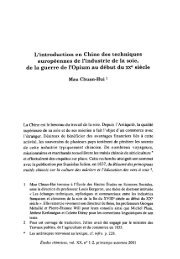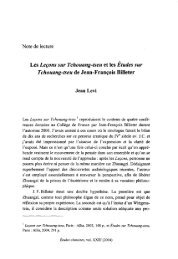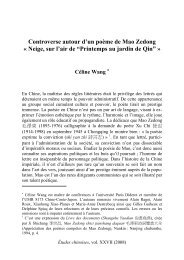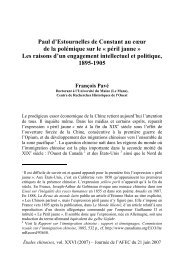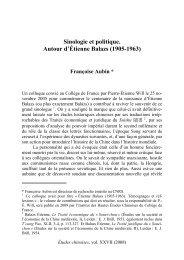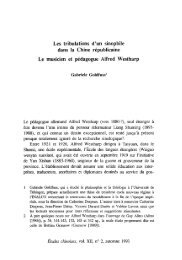Create successful ePaper yourself
Turn your PDF publications into a flip-book with our unique Google optimized e-Paper software.
Comptes rendus<br />
lesser or a greater measure of change would probably hâve provoked a<br />
social and political crisis. [...] [This] helps to explain both the immobility<br />
and the resilience of the last few centuries of the empire." (reprinted in<br />
Another History, p. 100). What Li Bozhong has done is to add some interesting<br />
and important détails. The Song style was in large measure a response<br />
to the transition in Jiangnan from labour being the input in shortest<br />
supply to to good-quality land being the scarcest input (as I hâve shown in<br />
The Retreat of the Eléphants). My work with Su Ninghu since the early<br />
1990s on the hydraulic history of Jiangnan also made it very clear to us<br />
that in the Hangzhou Bay area, and nearby, there was a slow but increasingly<br />
successful improvement in techniques from before the Song down to<br />
at least the eighteenth century.<br />
A conceptual problem with ail of Li's discussion is a tunnel-vision<br />
insistence on treating 'productivity' as being defïned by yield per unit of<br />
area. The core of productivity is the ratio of the energy input to the energy<br />
output, and for Chinese lowland rice-farming it is vital to think not just in<br />
terms of seed/yield ratios (for which data are scarce, but which mean more<br />
than yields per hectare let alone the elusive mu) but in terms of the energy<br />
spent in preparing and maintaining fields levelled and walled fields, sustaining<br />
their fertility, which required collecting and applying manure continually,<br />
the effort of transplanting and weeding, plus the building and<br />
regular repairing of hydraulic Systems that are in most cases under nonstop<br />
attack from hydrological pressures. It could even hâve been that the casual<br />
broadcast-sown rice-farming, using ox-power for ploughing, found in<br />
Guangnan-xi in the twelfth century {Pattern, p. 114) was more energyefficient<br />
than the more 'advanced' forms in Jiangnan where Li says<br />
"maximum productivity" was reached in mid-Qing (p. 173). Fine-tuning,<br />
although often impressively ingenious, is at times less a sign of real progress<br />
than a response to a shortage of resources. This discussion needs<br />
rethinking in subtler terms.<br />
Li does not discuss China as a whole, but for the most part only Jiangnan.<br />
He does not, however, bring out the dynamic pattern hidden in<br />
Shiba Yoshinobu's population figures for the préfectures of Jiangnan<br />
during the Song period. If one calculâtes the annual rate of growth, one<br />
377



